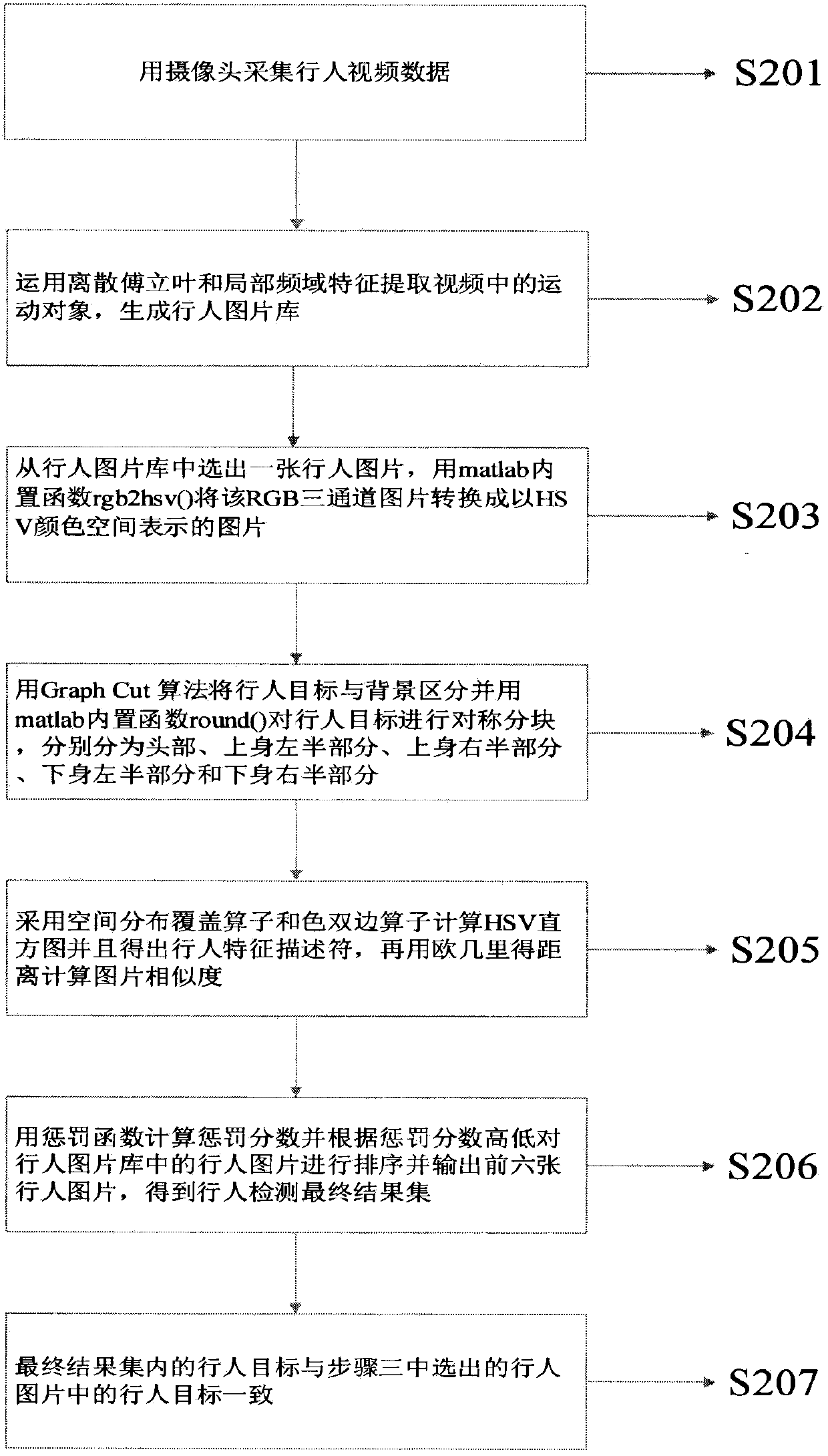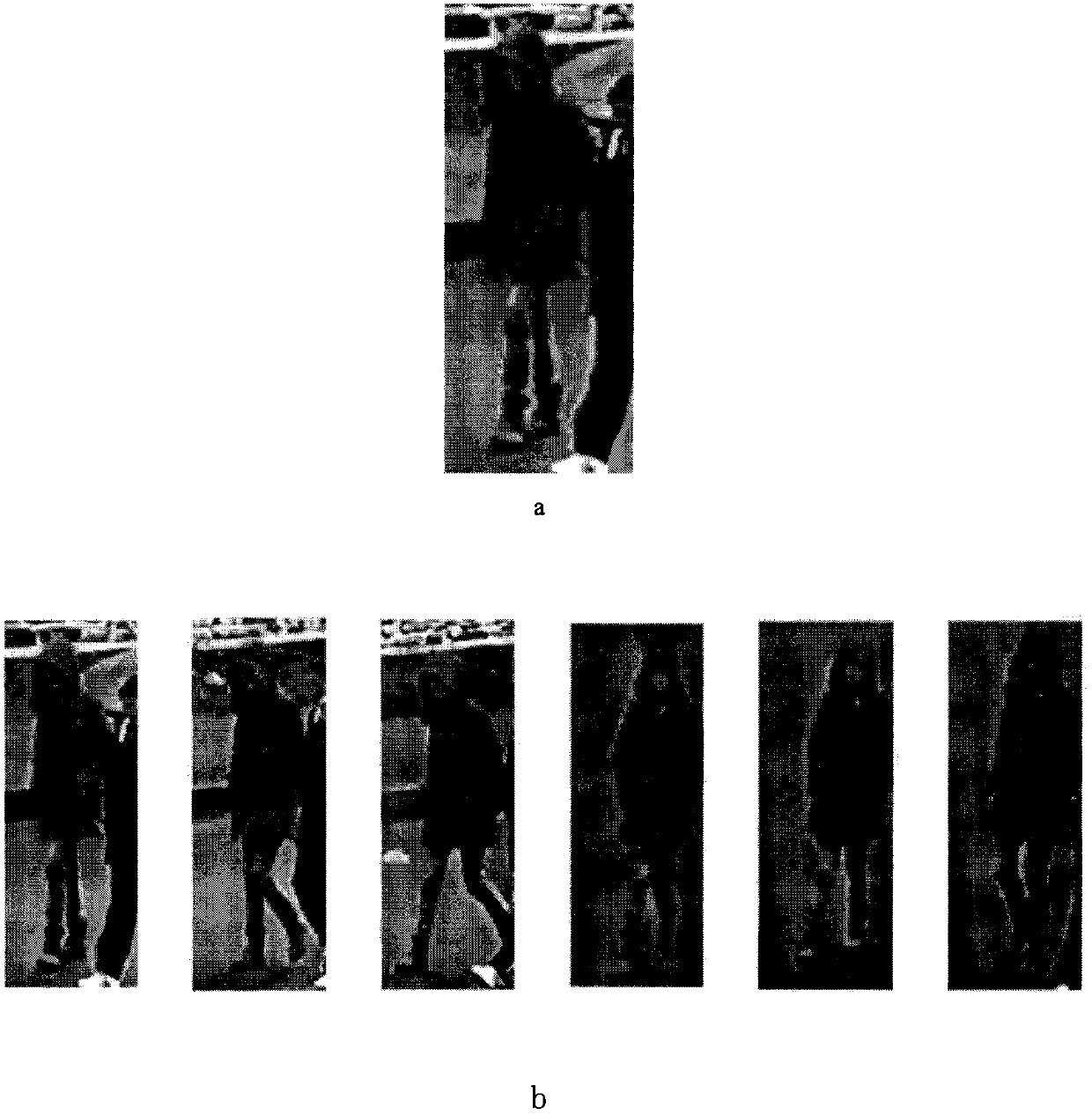Pedestrian re-identification algorithm implementation method based on HSV and SDALF
A pedestrian re-identification and implementation method technology, which is applied in the field of pedestrian re-identification algorithm based on HSV and SDALF, can solve the problems of poor pedestrian feature extraction and low pedestrian re-identification accuracy, and achieve the effect of improving accuracy
- Summary
- Abstract
- Description
- Claims
- Application Information
AI Technical Summary
Problems solved by technology
Method used
Image
Examples
Embodiment 1
[0047] Extract the R, G, and B values of each pixel in the picture a, and use V=max(R, G, B), Convert the pedestrian picture a represented by RGB to a picture represented by HSV. The optimized Graph Cut algorithm is used to extract multi-dimensional feature vectors from the converted image a, and a logistic regression is used to find an optimal classification surface to distinguish pedestrian targets from background and block pedestrian targets. The HSV histogram is calculated with the spatial distribution coverage operator and the color bilateral operator, and the pedestrian feature descriptor is obtained as
[0048]
[0049] A i Indicates the i-th image in the pedestrian image library A, H hsv is the HSV color histogram, n is the number of body sub-blocks, according to the division, n=5.
[0050] Let a and A 1 That is, the first picture in the A database matches the left half of the upper body. There are n pixels in the left half of the upper body in picture a, and...
PUM
 Login to View More
Login to View More Abstract
Description
Claims
Application Information
 Login to View More
Login to View More - R&D Engineer
- R&D Manager
- IP Professional
- Industry Leading Data Capabilities
- Powerful AI technology
- Patent DNA Extraction
Browse by: Latest US Patents, China's latest patents, Technical Efficacy Thesaurus, Application Domain, Technology Topic, Popular Technical Reports.
© 2024 PatSnap. All rights reserved.Legal|Privacy policy|Modern Slavery Act Transparency Statement|Sitemap|About US| Contact US: help@patsnap.com










